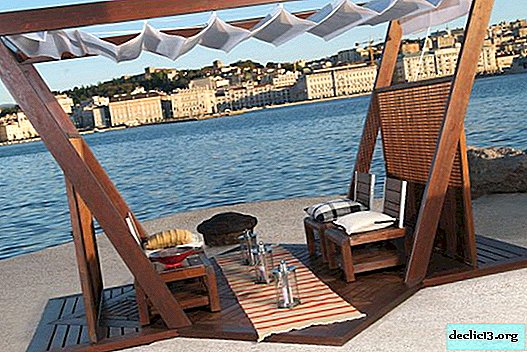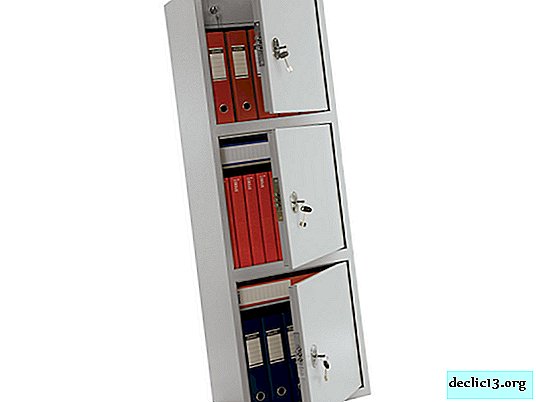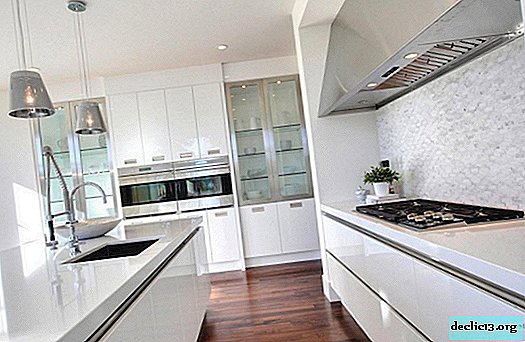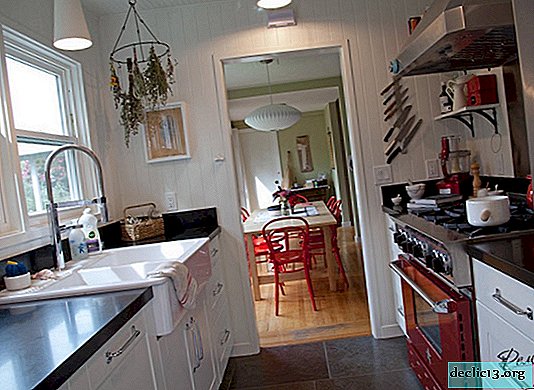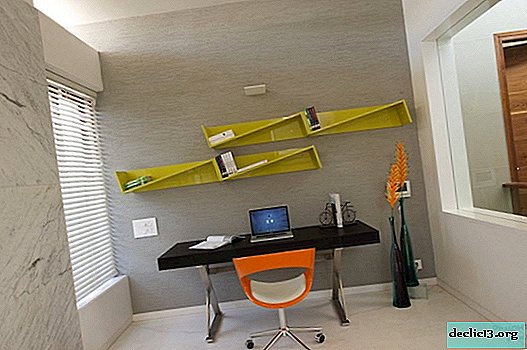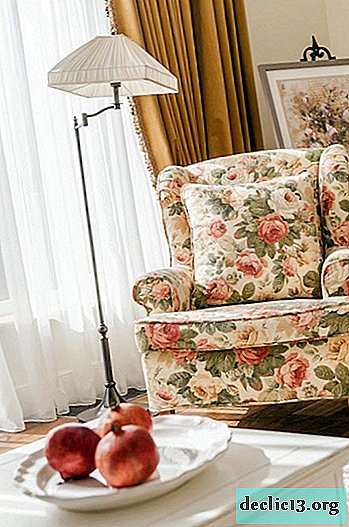St. Stephen's Cathedral in Vienna: catacombs and crypt of the Habsburgs
St. Stephen's Cathedral is the main religious site in Vienna, which has long become an undeniable symbol of the capital and Austria as a whole. The temple combines in its exterior and interior decoration two architectural styles at once - Romanesque and Gothic, which makes it one of the most striking achievements of medieval architecture. In addition to the forms and reliefs of the building itself, St. Stephen's Cathedral attracts tourist attention with numerous valuable artifacts, among which are preserved both ancient church attributes and outstanding works of world art.
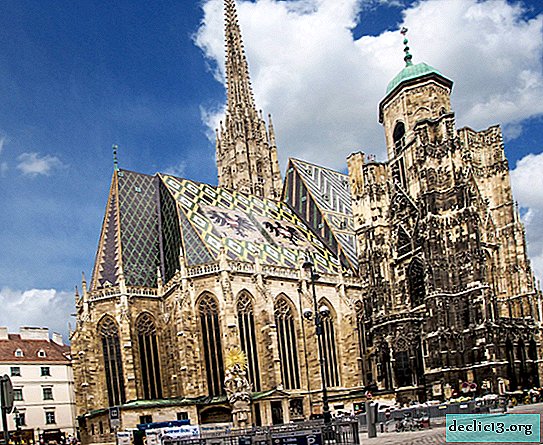
St. Stephen's Cathedral in Austria is located in the Old Town on Stefansplatz square, in the thick of tourist activity. The attraction, the spire of which reaches 136 m in height, is perfectly visible from most of the central points of the city. Inside, each visitor has the opportunity not only to appreciate the magnificence of the decoration, but also to climb up to the observation deck and contemplate the charm of old Vienna from a bird's eye view. But to realize the full value of the cathedral, a cursory glance at its architecture and decoration is not enough: it is important to delve into the history of the structure and mark the main events.
Short story

The first mention of St. Stephen's Cathedral in Vienna in documentary sources dates from 1137: in it he figures as a Romanesque church. In the middle of the 12th century, Vienna had only four temples, and only one of them received parishioners. The capital urgently needed a new monastery, so the authorities decided to build a cathedral outside the city walls. The consecration of the church took place already in 1147, but it is believed that by that time the building was not completely rebuilt. At the beginning of the 13th century, a large-scale expansion of the cathedral began: a part of the western wall, executed in that period in the Romanesque style, survived to this day. In 1258, a fire occurred in the church, apparently insignificant, since by 1263 it was restored and re-consecrated.
Presumably, in 1304, through the donations of the Duke of Albert II, it was possible to initiate the construction of the eastern part of the cathedral. The grand opening of the famous Albert Choirs took place in 1340. About a century later, the southern tower of the temple was erected, which for a long time was considered the highest in Europe. But the North Tower, which was designed for symmetry with the South, was never completed. In 1511, its construction was frozen due to the approaching Ottoman threat, as a result of which all forces were cast on the fortification of the city walls. In 1711, the heaviest cathedral bell in Pummerin, weighing more than 21 tons, was installed in the North Tower.

During the Second World War, the cathedral survived without serious damage, but during the Soviet offensive in 1945, the vandals set fire to the shops near the church. The flame was transferred to the church, as a result of which its roof was completely burnt out, many valuable artifacts and works of art were destroyed, and a bell fell from the North Tower. With the active financial support of the federal lands, the building was restored in 7 years, and in 1952 its grand opening took place, marked by the triumphant return of the newly cast bell.

The restoration of this cathedral in Austria continues to this day. The damage to the temple in a fire today is clearly visible in its charred outer walls. However, the reconstruction of the building is in full swing: already this year, the repaired organ that suffered from the fire should return to the cathedral. Also in the coming years it is planned to restore its North Tower.
Architecture and Interior
Stephen's Cathedral in Vienna in Austria is unique in its architecture, demonstrates harmonious combinations of styles, which in many respects contributed to its centuries-old construction and expansion. The temple, built of limestone, covers an area of more than 4200 m². Outside it is decorated with two towers - South (Steffi) and North (Eagle). Steffi is built in the Gothic style, its height is 136, 4 m - this is the highest part of the entire structure. Her spire is crowned by a sphere with a double-headed eagle.

Initially, medieval architects planned to build the North Tower by analogy with the South. But due to the Ottoman invasion, it was not completed. The last stone was laid in the Eagle Tower in 1511, and after deciding not to finish the job, it was simply crowned with a dome. Today, the height of this building is a little over 68 m, and its main decoration is a giant bell.

Of particular interest is the unusual roof of the temple, built at a steep angle (in some parts, the slope reaches 80 °). The roof stretches 111 m, and its height is 38 m. The uniqueness of the roof lies in its bright geometric patterns, for the creation of which architects used more than 230 thousand multi-colored enameled tiles. On the southern side of the roof, a figure of a double-headed eagle, a symbol of the Habsburg empire, is paved with tiles.

The main entrance to the church of St. Stephen in Vienna, called the Portal of the Giants, is decorated with busts of saints, geometric relief and figures of animals. Its name is associated with a huge bone found during the laying of the foundation of the North Tower and supposedly belonging to the dragon. In fact, it was a mammoth bone, which, incidentally, did not prevent it from hanging over the main doors of the monastery for many years. Above the entrance are two Romanesque towers 65 meters high, which together with the Portal of the Giants are considered the oldest parts of the cathedral.

Inside, the church of St. Stephen is no less magnificent than outside. The arches directed upwards divide the building into three parts, where altars are installed (a total of 18) and benches for parishioners. The main altar, located in the choirs, is made of black marble and decorated with biblical paintings. One of the main features of the cathedral is the abundance of sculptures and art paintings in the interior. The most valuable monument of the late Gothic style was the openwork department, created in 1515 and depicting the faces of famous church teachers.

Also, St. Stephen's Cathedral in Austria is famous for its skillful stained-glass windows, playful sparkling glare in the sun. Most of the glass panels presented are just a copy, and genuine products are stored in the city museum. Nevertheless, five original 15th-century stained-glass windows depicting scenes from the Bible were left in the cathedral. Speaking about the decoration of the temple, one cannot but mention the three organs that appeared in the church at different periods. The largest of them has tens of thousands of pipes and is the largest organ in all of Austria.
 Find out RATES or book any accommodation using this form
Find out RATES or book any accommodation using this formCatacombs
Until the mid-18th century, St. Stephen's Cathedral in Austria was surrounded by numerous cemeteries, which were passed on to the Austrians from the Romans. Being buried near the shrine was always considered a great honor, however, not only aristocrats, but also ordinary citizens were buried at local graveyards. In 1735, a bubonic plague broke out in Vienna, as a result of which the cemeteries adjacent to the cathedral were closed, and the remains from the graves were moved to the catacombs that were under the temple. Until the law in 1783 was passed in Vienna prohibiting the burial of people in the city, all burials were organized in the cathedral's dungeon. Today they have preserved more than 11 thousand remains.

The main temple of Austria is also the final resting place of many bishops, dukes and emperors. It is here that the Habsburg crypt is located, where the remains of 72 members of the dynasty are stored in carved tombs. Also in the church is the tomb of Frederick III, the construction of which took almost 45 years: the coffin is made of red marble, on which 240 figures are carved. In addition, the tomb of Eugene of Savoy, the greatest European military leader who saved the Habsburgs from invaders from France and the Ottoman Empire, was installed in St. Stephen's Cathedral. Currently, anyone can visit the catacombs as part of the tour for an additional fee.

- Opening hours: Mon - Sat - from 10:00 to 11:30 and from 13:30 to 16:30. Sun - from 13:30 to 16:30.
- Cost of visit: 6 €, children's ticket - 2.5 €.
- Duration: 30 minutes
Observation Decks
Today, every guest of Austria has the opportunity to enjoy breathtaking views of Vienna from the North or South tower of St. Stephen's Cathedral. Both platforms offer unique panoramas to specific areas of the city. On the observation platform in the southern part you need to climb on foot, breaking 343 steps.
- Opening hours: daily from 09:00 to 17:30
- Cost of visit: adult ticket - 5 €, child ticket - 2 €.

For those who are afraid of heights, the North Tower, where the famous bell is located, can act as an alternative viewing platform. You can get to it by elevator, which will lift you up to 50 m.
- Opening hours: daily from 09:00 to 17:30
- Cost of visit: adults - 6 €, children - 2.5 €.
Practical information

- Address and how to get: Stephansplatz 3, 1010 Vienna, Austria. The most convenient way to get to the cathedral is by metro. A few steps from the church of St. Stephen is the station Stephansplatz, which can be reached by branches U1 and U3.
- Opening hours: Mon - Sat - from 09:00 to 11:30 and from 13:00 to 16:30. Sun - from 13:30 to 16:30.
- Cost of visit: is free. An excursion with an audio guide or guide is paid at will. Price - 6 €, for children - 2.5 €. The audio guide is available in 23 languages, including Russian.
It is also possible to purchase an All Inclusive ticket, which includes visits to both observation platforms, catacombs and the cathedral itself with a guide. The price of such a pass for adults is 14.90 €, for children - 3.90 €. If you have a Vienna Pass card, the cost is 9.90 €.
Interesting Facts
- The great composer of Austria, Wolfgang Mozart, was married in St. Stephen's Cathedral in Vienna in 1782, but already after 9 years, his funeral was held there.
- Since the church of St. Stephen is a symbol of Vienna and Austria, its image was chosen for Austrian coins in denominations of 10 cents.
- It is noteworthy that in the crypt of the Habsburgs in the church of St. Stephen are not stored the bodies of members of the dynasty. The burial method of the imperial family was very eccentric: they buried themselves in parts. Internal organs were removed from the bodies of the deceased, placed in special urns, which were then sent to the crypt of St. Stephen's Cathedral. The hearts of the Habsburgs (54 urns) rest in the church of Augustine in the Crypt of Hearts. Bodies without organs were buried in the Kapuzinerkirche.
- In total, St. Stephen's Cathedral in Vienna in Austria has 23 bells. Each of them carries out its function. The new Pummerin, cast in the post-war period, is the second largest in Europe, second only to the bell of Cologne Cathedral.

Useful Tips

- To get the most out of the atmosphere of the Gothic Vienna Cathedral in Austria, we recommend attending an organ music concert.
- It is not forbidden to take a photo in St. Stephen's Cathedral in Vienna, but the exception is the catacombs, where photographing is strictly prohibited.
- Despite the fact that the South Tower is higher, many tourists claim that the best views open from the northern platform. Ascent to the southern platform is carried out along a narrow spiral staircase, where more than 300 steps are necessary, which can become a real challenge for many. In addition, viewing from the southern platform is possible only from windows to which entire lines are built. The northern platform is equipped in the open space and the views from it are viewed much better.
- We advise you to look at the church not only in the daytime, but also in the evening, when the bright lights turn on.
- St. Stephen's Cathedral is one of the main objects in Vienna, so there are always a lot of tourists in it. If you would like to avoid lines and crush, it is best to come to the temple at the opening.

